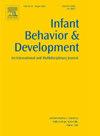个体差异视角下的婴儿期情绪调节:洞察与未来方向
IF 2
3区 心理学
Q3 PSYCHOLOGY, DEVELOPMENTAL
引用次数: 0
摘要
许多关于婴儿情绪调节的研究都优先考虑广泛的、基于群体的模式,而不是个人的轨迹。忽视婴儿之间的个体差异可能导致关于自我调节发展的不完整或误导性结论,并可能导致过度概括的发现,而不是普遍适用的。在过去的25年里,越来越多的证据表明婴儿在他们的调节模式上有很大的不同,形成了不同的亚群,这些亚群是由行为、生理和气质因素形成的。这篇综述综合了这些亚群在生命第一年跨领域出现的主要发现。此外,本文还探讨了母亲行为的个体差异如何通过与婴儿特征的相互作用,独立地促进婴儿情绪调节的发展。审查最后概述了未来研究的重点,这些研究将进一步有助于了解个体差异,包括多模式方法、纵向研究和更广泛的家庭系统框架。通过接受个体差异的观点,研究人员可以加深我们对早期情绪调节的复杂性及其长期发展意义的理解。本文章由计算机程序翻译,如有差异,请以英文原文为准。
Emotion regulation in infancy through the lens of individual differences: Insights and future directions
Much of the research on infants’ emotion regulation has prioritized broad, group-based patterns over individual trajectories. Ignoring individual differences between infants can lead to incomplete or misleading conclusions about the development of self-regulation and may result in overgeneralizing findings that are not universally applicable. Over the past 25 years, increasing evidence indicates that infants vary considerably in their regulatory patterns, forming distinct subgroups shaped by behavioral, physiological, and temperamental factors. This review synthesizes key findings on the emergence of these subgroups across domains in the first year of life. Additionally, the review explores how individual differences in maternal behavior contribute to the development of emotion regulation in infants, both independently and through interactions with infant characteristics. The review concludes by outlining priorities for future research that will further contribute to understanding individual differences, including multimodal approaches, longitudinal studies, and broader family-system frameworks. By embracing an individual differences perspective, researchers can deepen our understanding of complexities of early emotion regulation and its long-term developmental implications.
求助全文
通过发布文献求助,成功后即可免费获取论文全文。
去求助
来源期刊

Infant Behavior & Development
PSYCHOLOGY, DEVELOPMENTAL-
CiteScore
4.10
自引率
4.80%
发文量
94
期刊介绍:
Infant Behavior & Development publishes empirical (fundamental and clinical), theoretical, methodological and review papers. Brief reports dealing with behavioral development during infancy (up to 3 years) will also be considered. Papers of an inter- and multidisciplinary nature, for example neuroscience, non-linear dynamics and modelling approaches, are particularly encouraged. Areas covered by the journal include cognitive development, emotional development, perception, perception-action coupling, motor development and socialisation.
 求助内容:
求助内容: 应助结果提醒方式:
应助结果提醒方式:


